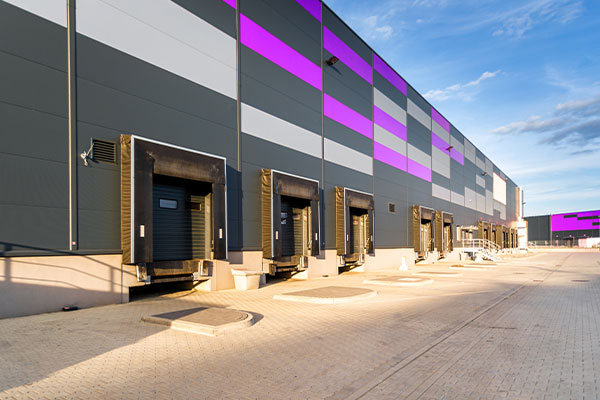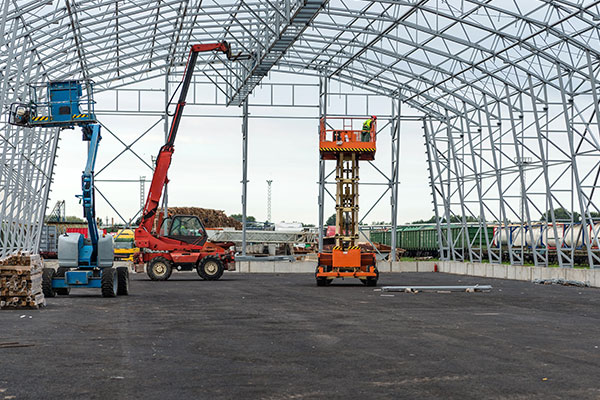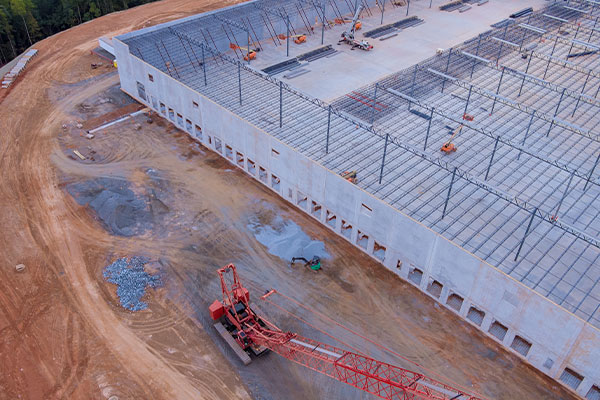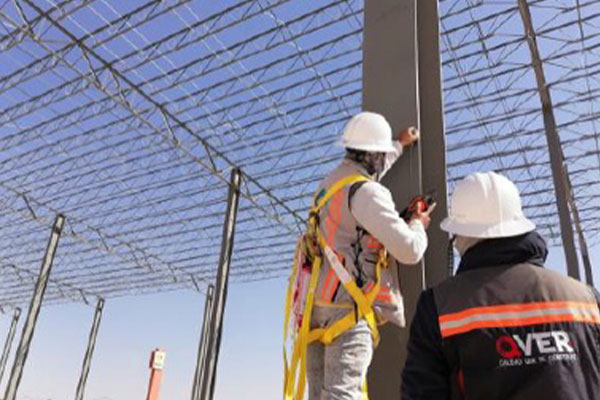Tilt-up walls are a popular solution for the construction of industrial warehouses. These walls are manufactured off-site and then «tilted up» into place. This process requires a combination of technical skills and construction experience and can be divided into several stages: preparation of panels, bevels, and moldings; preparation of the work area, formwork, and reinforcement; and placement and finishing of the wall.
Preparation of panels, bevels, and moldings:
In the first stage, authorized plans are reviewed, and connection panels for the wall and foundation, as well as panels to support the roof structure, are prepared. Additionally, bevels and moldings are checked, and openings for doors, windows, exhausts, pipe passes, and other requirements are marked.

Preparation of panels, bevels, and moldings:
In the first stage, authorized plans are reviewed, and connection panels for the wall and foundation, as well as panels to support the roof structure, are prepared. Additionally, bevels and moldings are checked, and openings for doors, windows, exhausts, pipe passes, and other requirements are marked.
Preparation of the work area, formwork, and reinforcement:
In the second stage, a level and smooth area is prepared to place the wall. The foundation is built, and a floor is placed to form the casting platform.The preparation of the area for the construction of tilt-up walls includes preparing a level and polished area for casting. The foundation and perimeter floor are built. Tilt-up walls can be cast on the final floor of the warehouse or on a surface outside the building.
Before casting the wall, the surface is prepared with an anti-adhesive additive, and formwork is placed. Reinforcing steel is placed, and the required amount is verified for each wall and opening. Embedded plates and inserts for mounting are installed.
Detailed structural review in the lifting stage is important to ensure the adequate amount of reinforcing steel and external reinforcements. The position of the embedded plates and inserts must be verified according to the project.
Casting of walls:
In the third stage, the wall is placed and finished. This process requires great precision and attention to detail to ensure that the wall is level and free of imperfections.
Preparation for tilt-up wall lifting:
Plates are placed in the foundation, their correct location is verified, the terrain is prepared for the crane, and brackets are placed to support the roof reinforcements. A surveyor is also required to ensure the correct levels. A strip without casting is left to connect the wall to the floor.
Placement of braces, cables, and lifting of walls:
Once the inserts have been placed, bracing is placed at an angle between 45° and 60° to meet design requirements. Before lifting the wall, the crane support elements (the rocker) must be placed, and it must be ensured that it has the adequate capacity to support the load. Once the concrete has hardened enough, the wall is carefully lifted to avoid damage. Then, the walls are connected for stability, and construction of the interior structure and foundation is completed.
Connections include the structure, foundation, between walls, and with the floor. Some connections are made with metal plates, and others with a strip of uncured concrete to join the floor bars with the wall bars.
Removal of props, repairs, and painting:
In the last stage, the props are removed, and the roof structure is permanently attached to the walls. Then, repairs are made to the prop connections and areas with porosity or casting errors, as well as displaced moldings. Paint or a sealer is applied to the walls after washing them to ensure good adhesion.
Q-Ver is your ally in construction, with its quality management, it is like having a guardian on your site ensuring that your tilt-up walls are correctly placed and meet the necessary specifications. With Q-Ver, you can be confident in having a high- quality and durable job. Experience the peace of mind that comes with having a quality guarantor on your site! Contact us today to learn more about.




